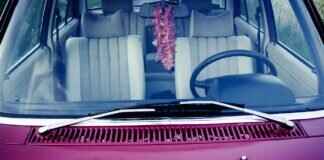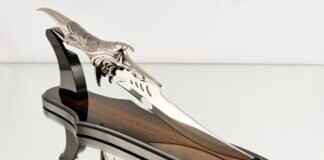This article will guide you through the process of replacing windshield wipers effectively, ensuring safety and visibility during driving. Learn the steps, tips, and best practices to do it right.
Replacing windshield wipers is essential for maintaining visibility and safety while driving. Worn-out wipers can lead to streaks and smears on your windshield, obstructing your view during rain or snow. This can significantly increase the risk of accidents. Regularly checking and replacing your wipers can ensure that you are prepared for any weather conditions.
Identifying when to replace your windshield wipers is crucial. Look for the following signs:
- Streaking: If your wipers leave streaks on the glass, it’s time for a change.
- Skipping: Wipers that skip across the windshield indicate wear.
- Noises: Unusual chattering or squeaking sounds during operation suggest that the rubber has degraded.
Common indicators of worn wipers include:
- Streaks: Obscured vision can result from streaks left by old wipers.
- Cracks: Look for cracks or tears in the rubber blade.
- Noise: Listen for chattering noises that signal ineffective wipers.
Regular inspections are recommended every six months. However, if you live in an area with extreme weather conditions, you may need to check them more frequently. Seasonal changes can also affect wiper performance, making it important to stay vigilant.
Yes, extreme weather can accelerate the wear and tear of your windshield wipers. High temperatures can cause the rubber to dry out and crack, while cold temperatures can lead to brittleness. Understanding how your local climate impacts your wipers can help you plan for timely replacements.
When purchasing new wipers, consider the following:
- Size: Ensure the wipers are the correct size for your vehicle.
- Type: Choose between traditional frame-style wipers or newer beam-style wipers.
- Material: Look for high-quality rubber that can withstand various weather conditions.
Replacing your windshield wipers is a straightforward task. Follow these steps for a successful replacement:
To remove old wipers:
- Lift the wiper arm away from the windshield.
- Locate the release tab on the wiper blade.
- Press the tab and slide the blade off the arm.
To install new wipers:
- Align the new blade with the arm.
- Push until you hear a click, indicating it is securely attached.
- Lower the wiper arm back onto the windshield.
By following these steps, you can ensure that your windshield wipers are replaced correctly, contributing to safer driving conditions.

Why is Replacing Windshield Wipers Important?
When it comes to ensuring a safe driving experience, windshield wipers play a crucial role. The importance of replacing windshield wipers cannot be overstated, as they are essential for maintaining clear visibility during adverse weather conditions. Regularly replacing your wipers is not just a matter of convenience; it is a vital aspect of vehicle maintenance that directly impacts your safety on the road.
Understanding the significance of replacing windshield wipers can help maintain your vehicle’s safety. Worn-out wipers can impair visibility and lead to dangerous driving conditions. When rain, snow, or sleet hits your windshield, effective wipers are your first line of defense against reduced visibility. Without them functioning properly, you risk encountering hazardous situations.
Moreover, the performance of your windshield wipers is influenced by several factors, including exposure to UV rays, extreme temperatures, and the accumulation of dirt and debris. Over time, these elements can cause the rubber blades to crack, harden, or become less effective at clearing water from your windshield. This deterioration can result in streaks or missed spots, obstructing your view and increasing the likelihood of accidents.
Identifying the signs of worn-out wipers is crucial for timely replacement. Here are some common indicators to watch for:
- Streaking: If your wipers leave streaks on the windshield, it’s a clear sign that they need replacing.
- Skipping: Wipers that don’t move smoothly across the glass can indicate wear.
- Unusual Noises: Squeaking or chattering sounds during operation are also warning signs.
Common signs include:
- Streaking: This occurs when the rubber blade is worn out and can no longer make proper contact with the windshield.
- Rubber Coming Off: If you notice pieces of rubber detaching from the blade, it’s time for a replacement.
- Chattering Noises: If your wipers make a chattering sound, it indicates that they are not functioning effectively.
Regular inspections, ideally every six months, can help catch issues early. Seasonal changes may also necessitate more frequent checks, especially after heavy use during rainy or snowy months. Keeping an eye on your wipers can prevent unexpected visibility issues.
Extreme weather conditions, such as heat or cold, can accelerate wear and tear. Understanding how your local climate impacts wipers can guide your replacement schedule. For instance, areas with harsh winters may require more frequent replacements due to ice and snow, while hot climates can cause the rubber to degrade faster.
Choosing the right wipers involves considering size, type, and material. Ensure compatibility with your vehicle and select high-quality options for optimal performance. Look for features such as:
- All-Weather Blades: These are designed to perform well in various conditions.
- Easy Installation: Many new wipers come with user-friendly installation features.
- Durability: Consider wipers made from high-quality materials that can withstand the elements.
Following a systematic approach to replace wipers can make the task straightforward and efficient. Here’s a detailed guide on how to do it correctly:
- Lift the Wiper Arm: Start by lifting the wiper arm away from the windshield.
- Locate the Release Tab: Find the release tab on the wiper blade and press it to detach the blade from the arm.
- Attach the New Wiper: Align the new blade with the arm and push until you hear a click.
- Lower the Arm: Gently lower the wiper arm back onto the windshield.
By following these steps, you ensure that your windshield wipers are functioning optimally, enhancing your visibility and safety while driving.

How Do I Know When to Replace My Windshield Wipers?
Windshield wipers are essential for maintaining visibility during adverse weather conditions. Recognizing when to replace your wipers can significantly enhance your driving safety. Below are some key indicators to help you determine if it’s time for a replacement.
- Streaking: If you notice streaks on your windshield after using the wipers, it’s a clear sign that the rubber blades have worn out. Streaks can obstruct your view, especially during rain.
- Skipping: Wipers that skip across the windshield rather than gliding smoothly indicate that the blades are no longer making proper contact with the glass. This can lead to missed spots that can impair visibility.
- Noisy Operation: Unusual sounds, such as squeaking or chattering, while the wipers are in use can suggest that the rubber is damaged or hardened. This noise indicates that the wipers are struggling to function effectively.
- Visible Damage: Inspect your wiper blades for any visible signs of wear, such as cracks, tears, or missing pieces of rubber. If the blades appear damaged, it’s time for a replacement.
- Rubber Separation: If the rubber blade starts to separate from the wiper frame, this can lead to decreased performance and should be addressed immediately.
- Weather Impact: Extreme weather conditions can accelerate the wear and tear of your wipers. If you live in an area with harsh winters or scorching summers, you may need to replace your wipers more frequently.
Regular maintenance is crucial. Inspect your wipers at least every six months, or more frequently if you experience heavy rain or snow. Seasonal changes can also dictate how often you should check your wipers. For example, after a long winter, your wipers may need replacing due to ice and snow damage.
In addition to the physical signs, consider the age of your wipers. Most wipers have a lifespan of about six months to a year, depending on usage and environmental factors. If you can’t remember the last time you replaced them, it’s likely overdue.
When purchasing new wipers, ensure that you choose the correct size and type for your vehicle. High-quality wipers made from durable materials can offer better performance and last longer. Look for options with features like hydrophobic coatings that repel water, enhancing visibility even in heavy rain.
By staying vigilant and proactive about your windshield wipers, you can ensure safer driving conditions and maintain clear visibility in all weather conditions. Remember, replacing worn-out wipers is not just a matter of convenience; it’s a critical safety measure.
What Are the Common Signs of Worn Wipers?
When it comes to maintaining your vehicle, windshield wipers are often overlooked. However, they play a crucial role in ensuring your visibility and safety while driving. Knowing when to replace them can prevent accidents and enhance your driving experience. In this section, we will explore the common signs of worn wipers that indicate it’s time for replacement.
Identifying the signs of worn windshield wipers is essential for maintaining clear visibility during rain or snow. Here are some key indicators to watch for:
- Streaking on the Windshield: If you notice streaks or smears on your windshield after using your wipers, it’s a clear sign that they are not making proper contact with the glass. These streaks can obstruct your view and are often caused by worn-out rubber blades.
- Rubber Coming Off the Blade: Inspect your wiper blades regularly. If you see any pieces of rubber peeling off or missing from the blade, it indicates deterioration. This can lead to reduced effectiveness, making it difficult to clear water or debris from your windshield.
- Chattering Noises: Unusual sounds during operation, such as chattering or skipping, are another warning sign. This noise occurs when the wiper blades struggle to glide smoothly across the windshield, often due to damage or wear.
- Visible Cracks or Tears: A close inspection of the rubber blade may reveal cracks or tears. These imperfections can prevent the blade from making proper contact with the windshield, leading to ineffective wiping.
- Wipers Leaving Gaps: If your wipers are leaving uncleaned patches or gaps on the windshield, it indicates that the blades are not functioning properly. This can compromise your visibility during adverse weather conditions.
- Reduced Performance in Heavy Rain: If you find that your wipers struggle to keep the windshield clear during heavy rain, it’s a strong indication that they need to be replaced. Worn wipers cannot handle intense conditions effectively.
Being aware of these signs can help you take proactive measures in maintaining your windshield wipers. Regular inspections are crucial, as they can identify issues before they become serious problems. Ideally, you should check your wipers every six months, or more frequently if you live in an area with extreme weather conditions.
In conclusion, recognizing the common signs of worn windshield wipers is vital for ensuring your safety on the road. Don’t wait until visibility becomes a problem; replace your wipers as soon as you notice any of these indicators. Keeping your windshield clear can make a significant difference in your driving experience.
How Often Should I Inspect My Wipers?
When it comes to maintaining your vehicle, one of the most overlooked components is the windshield wipers. Regular inspections are essential for ensuring that they function effectively, providing you with a clear view of the road ahead. How often should you inspect your wipers? The general recommendation is to conduct inspections at least every six months. However, various factors can influence the frequency of these checks.
Seasonal changes can significantly affect the performance and lifespan of your windshield wipers. For instance, if you live in an area that experiences heavy rainfall or snowfall, it is advisable to check your wipers more frequently, especially after periods of intense weather. Heavy use during these conditions can lead to accelerated wear and tear, making it crucial to ensure your wipers are in optimal condition.
Additionally, if you notice any signs of wear, such as streaking, skipping, or noisy operation, it may be time to inspect them sooner than your regular schedule. Keeping an eye on these indicators can help you catch potential issues before they compromise your visibility while driving. Regular maintenance can also save you money in the long run by preventing more extensive damage that may require costly repairs.
Another factor to consider is the climate in your area. Extreme temperatures, whether hot or cold, can degrade the rubber on your wipers more quickly. For example, prolonged exposure to sunlight can cause the rubber to crack and harden, while freezing temperatures can make the rubber less flexible. In such cases, you might want to inspect your wipers every three to four months to ensure they remain effective.
To make inspections easier, consider creating a simple checklist:
- Check for streaking on the windshield when in use.
- Look for any tears or cracks in the rubber blade.
- Listen for any chattering noises during operation.
- Ensure the wiper arms are functioning properly and not bent.
In conclusion, while a biannual inspection is a good rule of thumb, factors such as seasonal changes, usage, and climate can necessitate more frequent checks. By staying vigilant and proactive with your windshield wiper maintenance, you can enhance your safety on the road and ensure a clear view in all driving conditions.
Can Weather Conditions Affect Wiper Lifespan?
When it comes to maintaining your vehicle, one crucial aspect that often gets overlooked is the condition of your windshield wipers. Extreme weather conditions can significantly affect the lifespan of wipers, making it essential to understand how local climate factors into your wiper replacement schedule.
Both high temperatures and extreme cold can lead to accelerated wear and tear on windshield wipers. In warmer climates, the sun’s UV rays can cause the rubber on the wipers to deteriorate, leading to cracking and reduced effectiveness. Conversely, in colder regions, wipers may freeze to the windshield, causing the rubber to become brittle and less flexible. This brittleness can lead to streaking and skipping when the wipers are in use, compromising visibility.
In areas with high humidity, wipers can experience additional challenges. The moisture can lead to the growth of mold or mildew on the rubber blades, which can degrade the material and reduce their effectiveness. Regular cleaning and maintenance can help mitigate these effects, ensuring that your wipers remain in optimal condition.
Frequent rain or snow can also influence the longevity of your windshield wipers. The constant exposure to water can wear down the rubber, while the accumulation of ice and snow can place additional stress on the wipers. If you live in a region that experiences heavy snowfall, consider investing in winter wiper blades, which are designed to withstand harsh conditions.
Paying attention to the weather can help you determine when to inspect your wipers. After a particularly hot summer or a harsh winter, check for signs of damage such as:
- Cracks or tears in the rubber
- Streaking on the windshield
- Noisy operation when in use
By being proactive, you can ensure that your wipers are always ready to perform when you need them most.
As a general rule, it’s advisable to replace your windshield wipers every six to twelve months, but this can vary based on your local climate. If you live in an area with extreme weather conditions, you may need to replace them more frequently. Additionally, consider seasonal changes; for instance, if you experience heavy rains in spring or snow in winter, inspect your wipers more often during these times.
To maximize the lifespan of your windshield wipers, consider the following tips:
- Keep the windshield clean to prevent dirt and grime buildup.
- Use wiper fluid regularly to keep the blades lubricated.
- Store your vehicle in a garage or shaded area to protect the wipers from direct sunlight.
- Lift the wiper arms away from the windshield during extreme weather to prevent them from sticking.
By understanding how weather conditions affect your windshield wipers, you can make informed decisions about maintenance and replacement. This proactive approach not only enhances your driving safety but also ensures that you have clear visibility in all weather conditions.
What Should I Look for When Buying New Wipers?
When it comes to ensuring a clear view during adverse weather conditions, choosing the right windshield wipers is essential. The right wipers not only improve visibility but also enhance overall driving safety. Here are some key factors to consider when purchasing new wipers:
- Size: It is crucial to select the correct size for your vehicle’s wiper arms. Most vehicles have different sizes for the driver’s and passenger’s side. Refer to your vehicle’s manual or check with a retailer to find the appropriate sizes.
- Type: Wipers come in various types, including traditional frame, beam, and hybrid designs. Beam wipers are known for their superior performance in heavy rain and snow, while traditional frame wipers are often more affordable and widely available.
- Material: The material of the wiper blade affects its durability and performance. Look for blades made from high-quality rubber or silicone, as these materials tend to last longer and provide better wiping performance.
- Compatibility: Ensure that the wipers you choose are compatible with your vehicle’s make and model. Some wipers may require specific adapters for installation, so it’s wise to check compatibility before buying.
- Brand Reputation: Opt for reputable brands known for producing high-quality wipers. Brands that offer warranties or customer satisfaction guarantees are often a safer choice.
- Weather Resistance: If you live in an area with extreme weather conditions, consider wipers designed to withstand such environments. Wipers with a protective coating can help resist ice and snow buildup.
In addition to these factors, reading reviews and seeking recommendations can provide valuable insights into the performance of different wiper brands and models. Make sure to consider user feedback regarding their experiences with specific wipers in various weather conditions.
Finally, remember that high-quality wipers can significantly improve your visibility during rain or snow, which is crucial for safe driving. Investing in the right wipers not only enhances your driving experience but also contributes to your overall safety on the road.
By carefully considering these aspects, you can make an informed decision when purchasing new windshield wipers, ensuring that you choose a product that meets your needs and enhances your vehicle’s performance.

What is the Step-by-Step Process to Replace Windshield Wipers?
Replacing your windshield wipers is an essential maintenance task that can significantly enhance your driving safety. Worn-out wipers can hinder your visibility, especially during adverse weather conditions. By following a systematic approach, you can make this task straightforward and efficient. Here’s a detailed guide on how to do it correctly.
Replacing windshield wipers is a simple process that can be completed in a few easy steps. Here’s how to do it:
- Gather Necessary Tools: Before you begin, ensure you have the right tools. You typically need a new set of wipers, a small flathead screwdriver, and possibly a towel to clean the windshield.
- Lift the Wiper Arm: Start by lifting the wiper arm away from the windshield. This will allow you to access the wiper blade easily.
- Locate the Release Tab: Look for the small release tab on the wiper blade. This tab is usually found where the blade connects to the arm.
- Detach the Old Wiper Blade: Press the release tab while gently pulling the blade downwards. This should detach the old blade from the wiper arm. If it feels stuck, use a flathead screwdriver to help pry it loose gently.
- Prepare the New Wiper Blade: Take your new wiper blade out of its packaging. Make sure it is the correct size and type for your vehicle.
- Attach the New Wiper Blade: Align the new blade with the wiper arm. Slide it into place until you hear a click, indicating it is securely attached.
- Lower the Wiper Arm: Gently lower the wiper arm back onto the windshield. Be careful not to let it snap down, as this can damage the glass.
- Test the New Wipers: Finally, turn on your vehicle and test the new wipers. Ensure they move smoothly and effectively clear the windshield.
By following these steps, you can ensure that your windshield wipers are replaced correctly, enhancing your visibility and safety on the road.
- Regular Inspections: Check your wipers every few months for signs of wear.
- Keep the Windshield Clean: A clean windshield reduces wear on the wipers and improves visibility.
- Use Wiper Fluid: Regularly fill your windshield washer fluid to keep the glass clear and reduce strain on the wipers.
- Store Properly: If you live in an area with extreme temperatures, consider removing wipers during seasonal changes to prolong their life.
Following these guidelines will not only make replacing your windshield wipers easier but will also help maintain their efficiency, ensuring you drive safely in all weather conditions.
How to Remove Old Wipers Safely?
Replacing windshield wipers is an essential maintenance task that ensures your visibility and safety while driving. In this section, we will explore the steps involved in removing old wipers safely, ensuring that you can replace them with new ones without any hassle.
To effectively remove your old windshield wipers, follow these detailed steps:
- Lift the Wiper Arm: Begin by lifting the wiper arm away from the windshield. This action will give you enough space to work on the wiper blade without any obstruction.
- Locate the Release Tab: Look for the release tab on the wiper blade. This tab is typically found where the blade connects to the wiper arm. It may be a small button or lever that needs to be pressed or pulled.
- Press the Release Tab: Firmly press the release tab while gently pulling the wiper blade away from the arm. You should feel a slight click or hear a sound indicating that the blade has detached.
- Remove the Blade: Once the blade is detached, carefully pull it away from the wiper arm. Be cautious not to let the wiper arm snap back onto the windshield, as it may cause damage.
- Inspect the Wiper Arm: After removing the blade, take a moment to inspect the wiper arm for any signs of wear or damage. If the arm appears to be in good condition, you can proceed to install the new wiper blade.
By following these steps, you can safely remove your old wipers and prepare for the installation of new ones. It’s essential to handle the wiper arm and blade carefully to avoid any accidental damage.
Understanding the importance of proper removal techniques is crucial. Incorrect removal can lead to:
- Damage to the Wiper Arm: Forcing the blade off without following the proper steps may bend or break the wiper arm.
- Injury Risks: The wiper arm can snap back quickly, posing a risk of injury to your hands or face.
- Installation Issues: If the old blade is not removed correctly, it may complicate the installation of the new wiper, leading to improper function.
Taking the time to remove your old wipers properly will make the entire replacement process smoother and more efficient. Remember, regular maintenance of your windshield wipers is not just about replacing them; it’s about ensuring your safety on the road.
Fortunately, replacing windshield wipers does not require specialized tools. However, having the following items on hand can make the process easier:
- New Wiper Blades: Ensure they are the correct size and type for your vehicle.
- Soft Cloth: Use this to clean the windshield after removing the old blades.
- Safety Glasses: Protect your eyes from any debris during the process.
With the right approach and tools, replacing your windshield wipers can be a straightforward task that significantly enhances your driving experience. Always prioritize safety and visibility to ensure a smooth and enjoyable ride.
How to Install New Wipers Correctly?
Replacing windshield wipers is a straightforward task that can significantly enhance your driving experience. Properly functioning wipers ensure clear visibility during rain or snow, making it essential to install new wipers correctly. This guide will walk you through the steps to install new wipers effectively, ensuring safety and performance on the road.
Installing new windshield wipers is not just about replacing old ones; it involves a few critical steps to ensure they function optimally. Follow these steps for a successful installation:
- Gather Your Tools: Before starting, make sure you have your new wiper blades, a clean cloth, and possibly a flathead screwdriver if your wipers require a specific release mechanism.
- Lift the Wiper Arm: Gently lift the wiper arm away from the windshield. Be careful not to let it snap back against the glass, as this can cause damage.
- Remove the Old Wiper Blade: Locate the release tab on the old wiper blade. Press this tab while sliding the blade downwards towards the arm’s base. You should feel it detach easily.
- Prepare the New Wiper Blade: Take your new wiper blade out of its packaging. Ensure it matches the size and type of your old blade for a proper fit.
- Align the New Blade: Position the new wiper blade at the same angle as the old one. Align the connector with the wiper arm, ensuring that the tab fits into the slot.
- Secure the New Blade: Push the blade onto the arm until you hear a click. This sound indicates that the blade is securely attached. Give it a gentle tug to confirm it is locked in place.
- Lower the Wiper Arm: Carefully lower the wiper arm back onto the windshield. Ensure it sits flat against the glass to avoid any damage.
Once you have installed the new wipers, it’s important to check their functionality:
- Test the Wipers: Turn on your vehicle and activate the wipers. Observe their movement to ensure they operate smoothly and without any skipping.
- Inspect for Proper Contact: Check that the blades make full contact with the windshield. This ensures maximum visibility during use.
- Look for Any Noise: Listen for any unusual sounds while the wipers are in operation. If you hear chattering or squeaking, it may indicate improper installation or that the blades are not suitable for your windshield.
To extend the life of your new wipers, consider the following maintenance tips:
- Regular Cleaning: Clean your windshield and the wiper blades regularly to remove dirt and debris that can cause wear.
- Store Properly: If you live in an area with extreme weather, consider removing the wipers during the off-season to prevent damage.
- Inspect Periodically: Check your wipers every few months for signs of wear or damage, and replace them as needed.
By following these steps and tips, you can ensure that your new windshield wipers are installed correctly and maintain optimal performance. This not only enhances your visibility while driving but also contributes to your overall safety on the road.
Frequently Asked Questions
- How often should I replace my windshield wipers?
It’s generally recommended to replace your windshield wipers every 6 to 12 months. If you notice any signs of wear, like streaking or skipping, it’s time for a change!
- Can I replace windshield wipers myself?
Absolutely! Replacing windshield wipers is a simple task that you can do yourself. Just follow the step-by-step guide, and you’ll have new wipers in no time.
- What size wipers do I need for my car?
Wiper sizes vary by vehicle model. Check your owner’s manual or look online for the specific size required for your car to ensure a proper fit.
- Are expensive wipers worth it?
Investing in high-quality wipers can enhance performance and longevity. While they may cost more upfront, they often provide better visibility and durability in the long run.
- What should I do if my new wipers are making noise?
If your new wipers are noisy, ensure they are installed correctly and that the blades are making proper contact with the windshield. Sometimes, adjusting the angle of the wiper arm can help!














